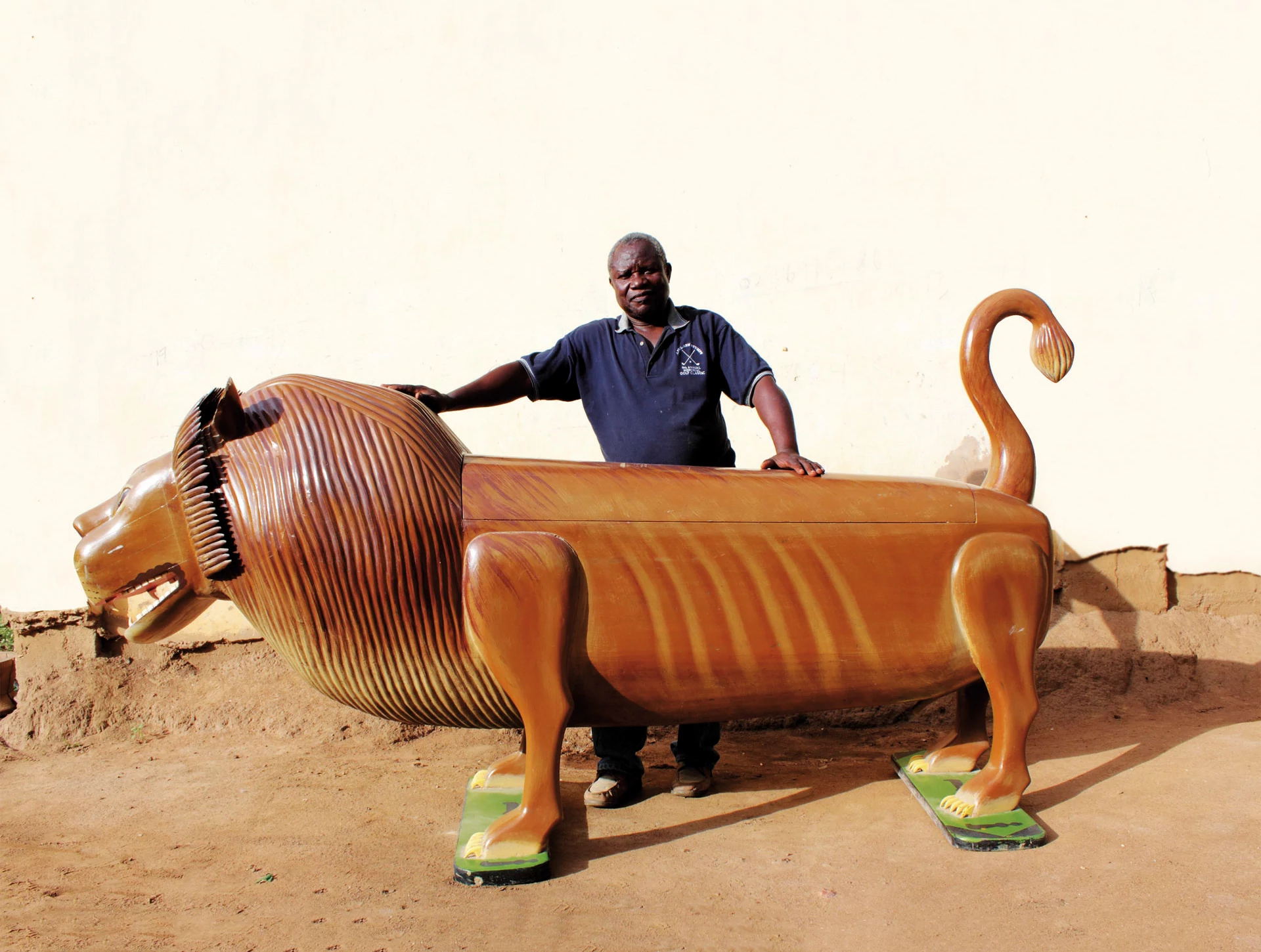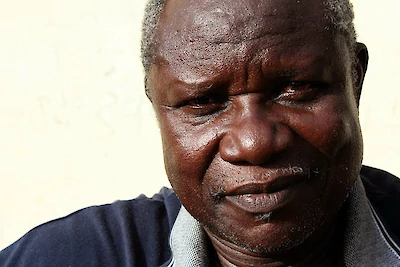Paa Joe
In death, celebrate life




In the coastal town of Teshie, Ghana, a small shop wedged between a barbershop and a clothing store carries the name KANE KWEI COFFINS. In 1964, 17 year old Joseph Ashong began a 12 year internship under the tutelage of his uncles Ajetey and Kane Kwei at the shop, and soon brought a uniquely Ghanan artform to the world.
Coffins in the western world are traditionally simple rectangular boxes with varying degrees of polish and embellishment, but in the 1950s, Seth Kane Kwei, a young carpenter, created a palanquin sedan chair in the shape of a cocoa pod for a local chief. When the chief died unexpectedly, he was buried in the palanquin. The impromptu coffin was immediately recognized as a more fitting and beautiful memorial to the man than a simple box, and a new industry was born. It was Kane Kwei’s shop where young Joseph learned the creative craft of designing and building abebuu adekai, or fantasy coffins.
Today Joseph, now known as Paa Joe, runs a coffin studio in Pobiman (greater Accra) and trains a new generation of coffin makers including his son Jacob. Paa Joe has not only outfitted countless deceased with vibrant, expressive coffins, but has sold two coffins to ex-US president Jimmy Carter and has work on display in museums around the world. Success has been tenuous however, with Jacob telling the Guardian in 2016 that “Any time we travel abroad, people in the western world have a huge respect for our work, but in Ghana they don’t recognise this as art.”